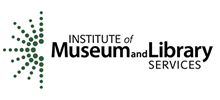Getting Started
To help participants get started, Shaping Outcomes includes several useful tools:
- Everything you need to know about how the course website works
- This orientation provides details about the course's design, layout, menu options, navigation buttons, museum examples, library examples, and more.
- A logic model shows program planning details, and the relationships between audience need, program activities, expected outcomes or results, and how those results will be evaluated.
- A sample logic model is included in the course to show what a complete program design looks like.
Case Studies for libraries OR museums
- Library and museum case studies include examples of real outcomes-based programs.
- Cases are attached to the course as PDF files. Cases are referred to as 'small', 'medium' or 'large' depending on the size of the lead institution in the case study program.
- Learners can decide whether their own organization best matches the 'small', 'medium', or 'large' examples, and then use those that fit best.
- Attached to the case studies are materials about the case organization such as evaluation studies, grant proposals, reports and other materials.
- You can use these to generate discussion among class participants and to help learners better understand how OPBE is applied in-context.
- Includes definitions and descriptions of key terminology and concepts in OBPE. Also includes examples of how terms might be seen in other disciplines or contexts.
- Use the tools above to introduce yourself to the Shaping Outcomes course and OBPE process. Also pass these resources along to participants in your session!
For information about arranging an instructor-led course, please contactt:
Dr. Rachel Applegate, Project Director
rapplega@iupui.edu
755 W. Michigan St., UL 3100A
Indianapolis, IN 46202
Voice: 317-278-2395
Fax: (317) 278-1807 (Call first)




